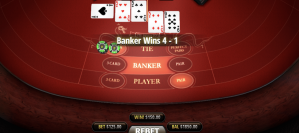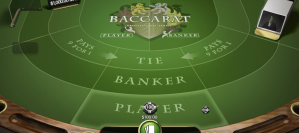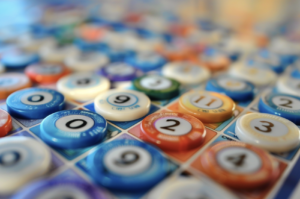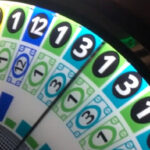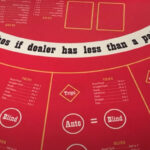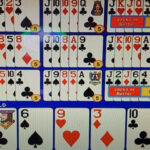-
What It Is
Baccarat may not be quite as famous as poker or blackjack when it comes to casino card games, but it’s still a major favorite at most casinos. It has appeared in numerous movies and is generally considered just as glamorous, just as “high class” as its better known sibling table/ card games. The game has been around since at least the 19th century when it became a favorite of the French aristocracy, but it may also have its origins stretching back all the way to Italy in the 15th century and it was actually imported to France by Italian soldiers in the 19th century. Either way, it’s a very well established and very highly thought of gambling game with some really favorable odds, albeit therefore with inevitably humble, reasonable payouts (you’re not going to win $100k on a $5 bet, but you will win fairly often).
The game is based on your usual 52 card deck and it’s similar to blackjack in that it’s all about pitting the dealer’s cards against the players and the hand that comes closest to a certain number without going past it – this time, 9 rather than 21, with card values being much more complicated than the straightforward values of blackjack – wins. The big difference here is that though the two hands are technically the dealer’s and the player’s, all players can actually bet on their hand winning, as usual, but also on the dealer’s hand winning and even for the two hands to tie.
The game is especially popular in the gambling Mecca of Macau, but it is common throughout the world. There are some variations on the game, but the actual playing style is mostly the same with only small details differing in how much control the player has on the cards being played, with the most widespread by far being Puto Banco where the play is determined entirely by a set of rules (see below) and the only control the player has is on the betting. This is the version we’ll be talking about here, as it’s he most complicated and also by far the most common and popular variant, especially in the United States.

-
How to Play Baccarat: Scoring
The biggest challenge of playing Baccarat is understanding how the game is scored. Beyond that, it’s really all pretty straightforward. Like most casino card games, it’s played with six to ten decks of cards, and players bet on the winning hand. So far so easy, but the fact that it’s a game where 9 is the highest value is where things get tricky.
In terms of individual values of the cards, there’s not too much to keep in mind here beyond the fact that 2 to 9 are face value, Ace is worth 1, and all picture cards are worth zero. The player and the dealer start with two cards each and the value of the hand is determined by simply adding the two cards together and if the sum of the two cards is worth less than 10, you simply take them as read, whereas if they equal more than 9, you minus 10 from the total.
To clarify that a bit, let’s look at two simple examples. If the two cards are 5 and 4, they are worth 9. If, however, the two cards are 5 and 6 then they obviously equal 11, in which case you subtract 10 from 11 and you are left with a value of only 1. Similarly, while 8 and a picture card will equal 8, 8 and 8 will equal 6 (16-10) and 8 and 4 will equal 2 (12-10). Two 5s, meanwhile, will equal zero (10-10).
Now, because the goal of the game is to get a hand as close to 9 as possible, another card can be dealt if the hand is worth too little. So, whether a hand is an ace and a 2 (equals 3) or a 6 and 7 (also equals 3), extra cards are dealt until the hand reaches a certain value.
Aside for the strange scoring, the way that baccarat really separates itself from blackjack is that the player doesn’t actually decide whether to “hit” for more cards or “stay” where they are. The player doesn’t actually play the cards at all in baccarat. The only part that players have any control over is how much they bet and on which hand (or both) they bet on winning. Whether or not extra cards are added to a hand is entirely dependant on a group of very strict rules that the dealer will use on both the “player’s hand” and the “dealer’s hand”.
While you can actually bet without knowing how this works by leaving it all up to the dealer, it’s always worth knowing how a hand wins or loses, even just for appearance purposes.

Here, then, is a very simple guide to baccarat’s very complex dealing rules:
- Player’s hand is 5 or less: the dealer adds a third card to the hand.
- Player’s hand is worth 6 or 7: no cards are added.
Once all cards are finished being dealt to the player, it’s onto the dealer’s hand…
- Dealer’s hand is worth 5 or less: the dealer adds another card
- Dealer’s hand is worth 6 or 7: no more cards are added.
- Dealer’s hand is worth 2, 1, or 0 in total from the first two cards: A third card is added regardless of player’s hand.
Now, if the player is dealt a third card, the following even more complicated rules are applied…
- Dealer’s total is 2 or less: The dealer always draws a third card for themselves, regardless of player.
- Dealer’s total is 3: Dealer draws a third card unless the player’s third card is an 8.
- Dealer’s total is 4: Dealer draws a third card if the player’s third card is 2 to 7.
- Dealer’s total is 5: Dealer draws a third card if the player’s third card is 4 to 7.
- Dealer’s total is 6: Dealer draws a third card if the player’s third card is a 6 or 7.
- Dealer’s total is 7: Dealer always stands/ adds no more cards.
Needless to say, this is an awful lot to remember. The good news, though, is that you will get the hang of it if you play enough rounds. Until then, just trust the dealer to work out whether to hit or stand and score each hand according to that simple rule above: add the card values together and if the total exceeds 9, minus 10 from the total.

-
How to Play Baccarat: Betting and Odds
The actual betting in baccarat is, obviously, very straightforward. Before any cards are dealt, each player places their bet (with minimums and maximums determined by table or by the casino itself) on any one of three outcomes: the player’s hand winning, the dealer’s hand winning, or the two hands ending up in a tie. There’s no doubling or splitting so the payout is no more complicated than that: if the hand you bet on loses, you lose your bet; if it wins you win. If the result is a tie and you don’t bet on a tie, you lose your bet; if you bet on a tie, you win with a higher payout than if you bet on the individual hands.
As to what to bet and on what, it’s worth understanding a few basics of the odds in baccarat. For the following examples, we will assume that eight decks are being used, with the odds being slightly lower with more decks, higher with fewer decks.
- The house advantage in baccarat is actually one of the best on the casino floor. This is not too surprising as it is a simple “even bet” game, with two typical outcomes (either hand winning) and a third (a tie) to create the house advantage. So, on an eight deck game, the player hand has a house advantage of 1.24%; the dealer’s deck has a house advantage of only 1.06%.
- This means that it’s obviously a better idea to bet on the dealer’s deck as it has the lower advantage. To make up for this, though, a 5% commission is charged on all wins of the dealer’s hand. Whether you decide to risk that 5% is up to you, but it’s generally worth it; especially in the long run.
- While betting on a hand will result in a 2:1 payout, “tie” bets pay out 8:1 or 9:1. This is because they’re much less common, with much higher house advantages: a 14.4% advantage when it pays 8:1 and a 4.85% advantage for a 9:1 payout (these payouts are set by the casino). If a tie occurs and the bet is on one of the hands, a “push” occurs and the player gets their original bet back.
In summary: The dealer’s hand will win around 45.8% of the time, the player’s hand wins 44.6% of the time. A tie will occur 9.6% of the time. The dealer’s hand is the safer bet, hence the 5% (or so) commission charge.

-
When – And When Not – to Play Baccarat
With all this said, it becomes quite easy to see whether baccarat should be your game of choice (or at least one of your games of choice) when you next hit the casino floor.
Pros:
Like betting on red or black, or odds or evens, in roulette, you have slightly less than an even chance of winning. This makes it one of the “safer” games to play because of the low house advantage – though obviously, you must still gamble responsibly and keep within a budget of how much you’re willing to lose.
It’s the only game where you can bet on the dealer’s hand winning, which adds some fun variety to your gaming experience.
Despite the difficulty in dealing rules (in the Puto Banco variant, at least), it’s a very easy game to pick up and play with only very basic knowledge needed to understand what’s going on, and even less to actually play!
Baccarat is still considered one of the most glamorous forms of betting around and the tables are usually a star attraction at most casinos – especially if you want to go for the “cooler” alternative to blackjack.
Cons:
The big weakness that baccarat (in the Puto Banco version, especially) has in comparison to poker and blackjack – though not to most other casino games – is that you only have control on your initial bet, not on the actual gameplay of the cards. This makes it easier to play (much easier in the case of poker), but it’s generally nowhere near as much fun.
Because it’s a “safer” game with a low house advantage and a nearly 50/50 chance of not losing your bet (though only 45% or so of actually winning), the actual payouts are relatively modest. You just get twice your bet back on each win when betting on one of the hands winning, though if you want to be bolder, you can get an 8 or 9 times payout if you bet on a tie.
If how you appear matters, be sure to actually understand the game and its very strange dealing rules. In the grand scheme of things, it doesn’t matter a jot if you actually understand those complex dealing rules, but knowing them can make you look more “professional”.
Either way, even with its flaws, it’s not exactly hard to understand why baccarat has remained as popular as it has for so many centuries. It’s challenging without being at all difficult, unpredictable without being particularly risky, popular without being overplayed. If you’ve never given it a try in your usual visits to your local casino, now is as good a time as any to give it a solid go.










